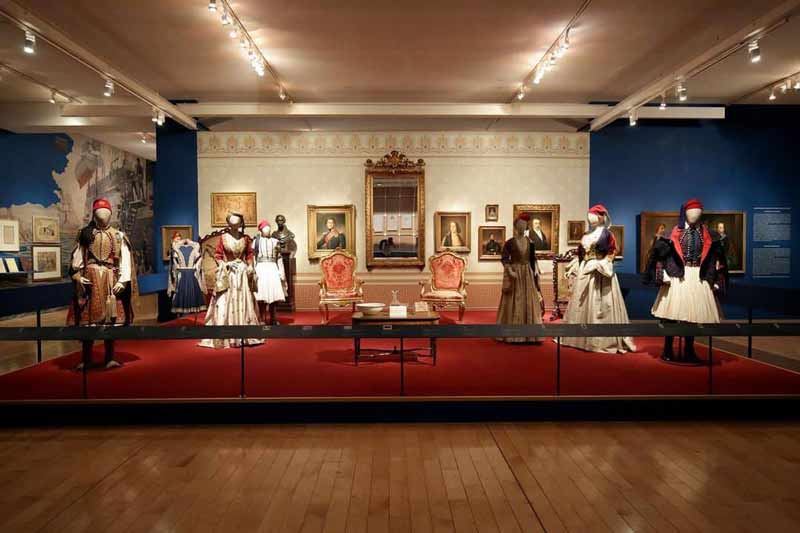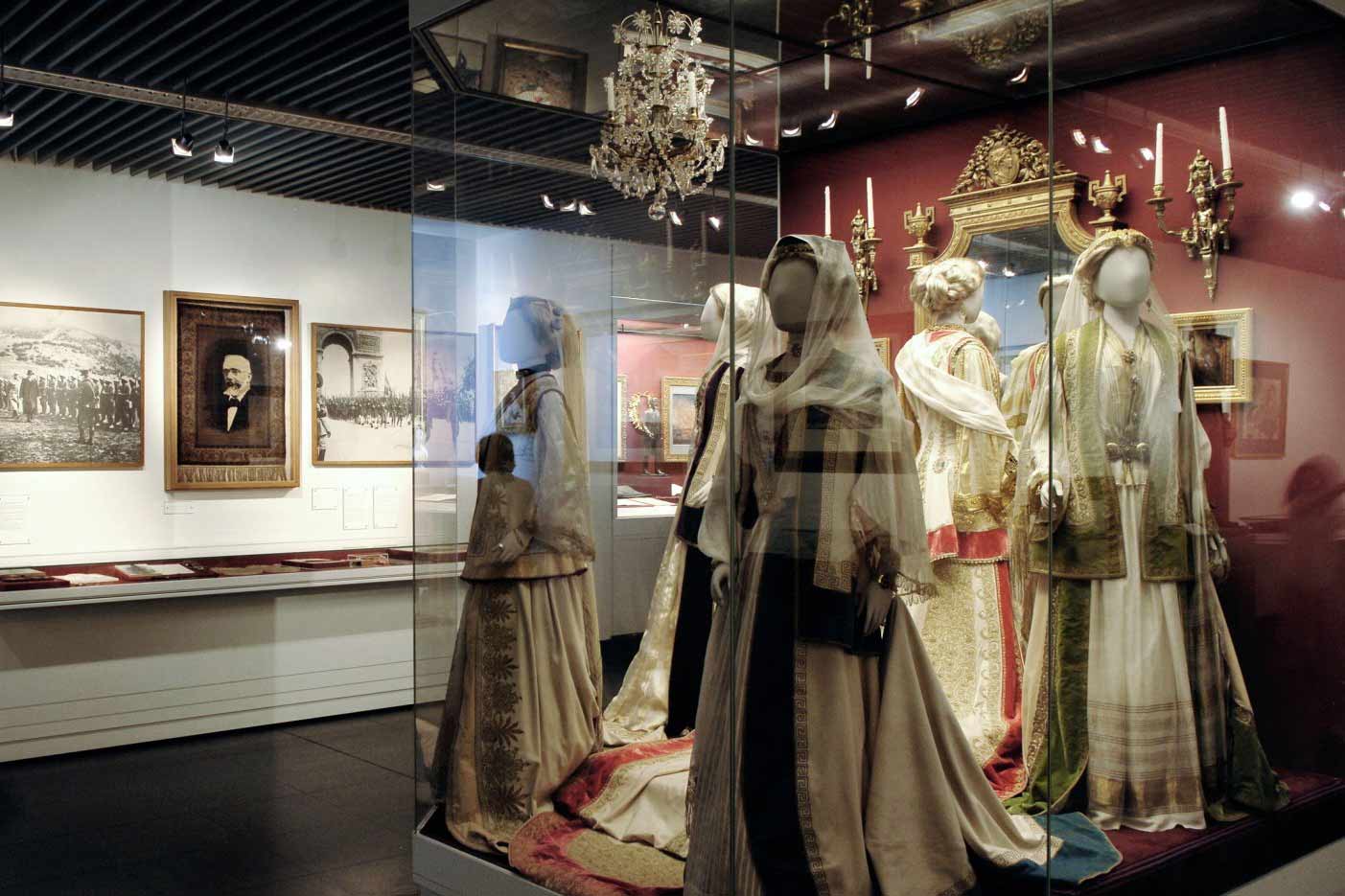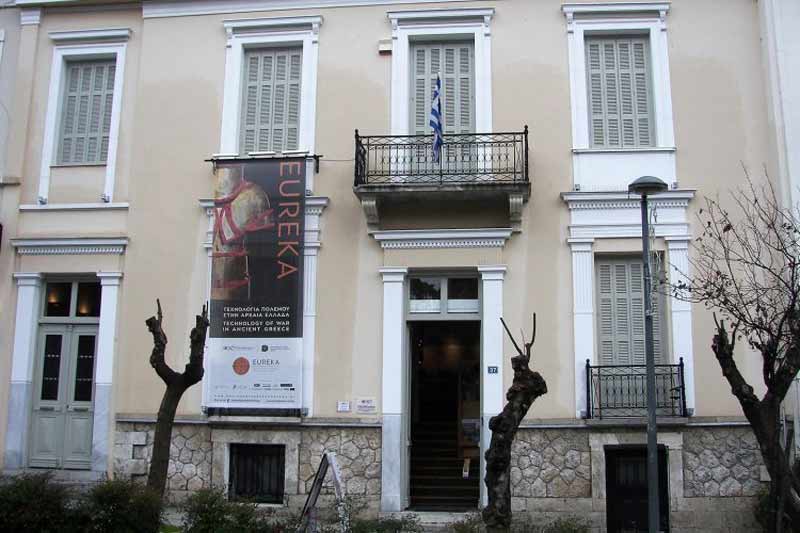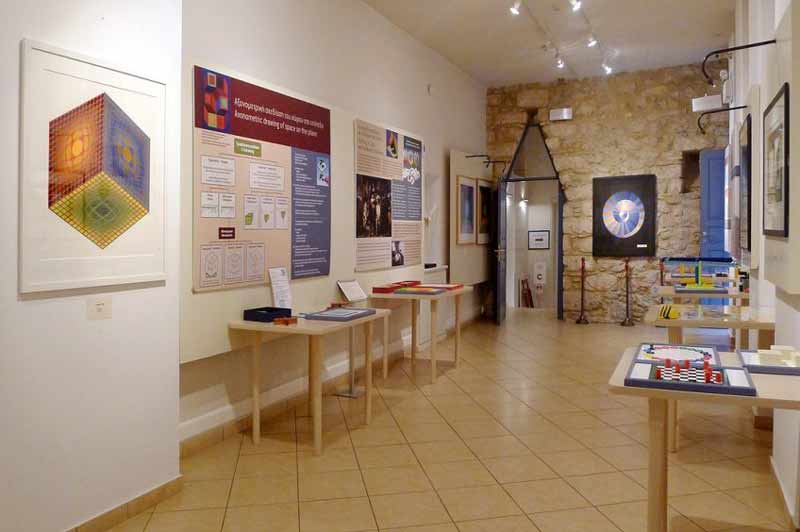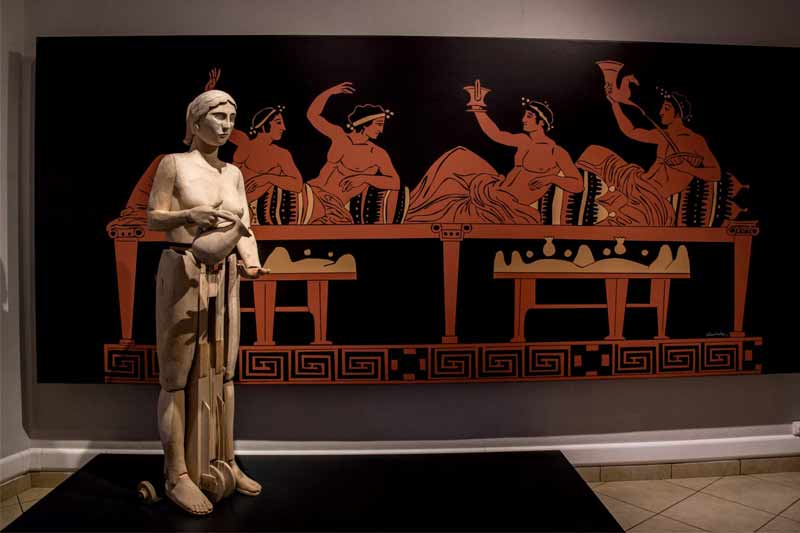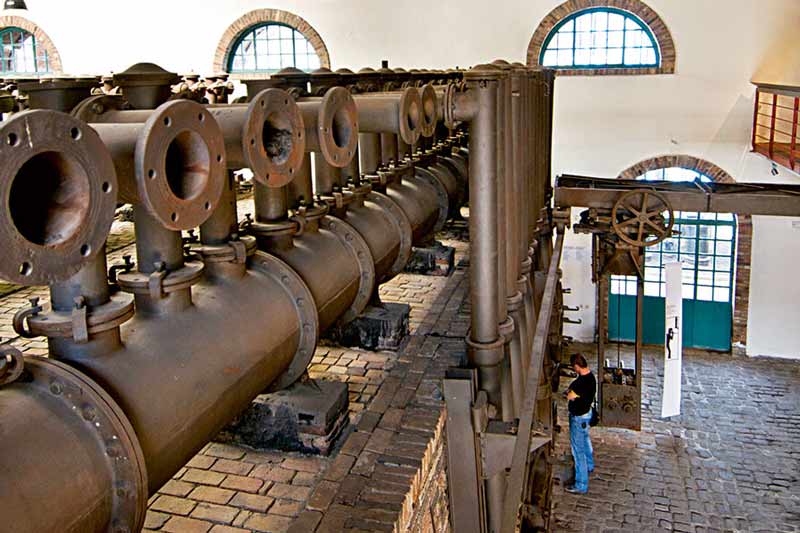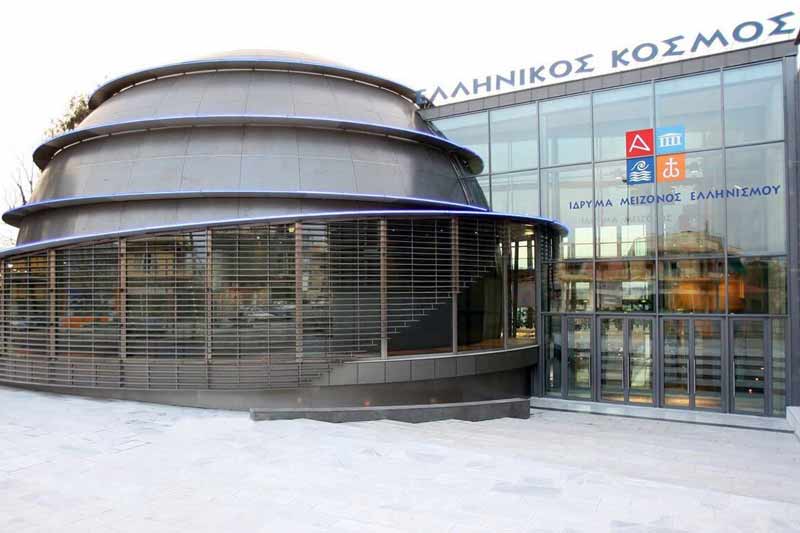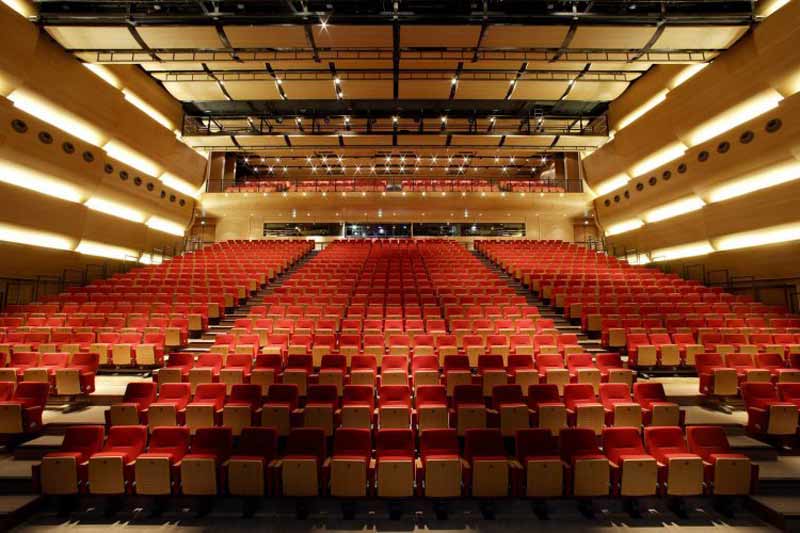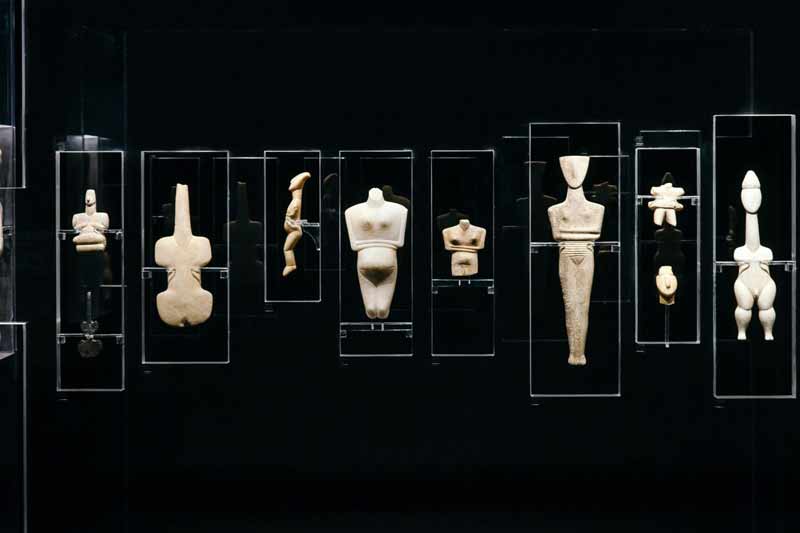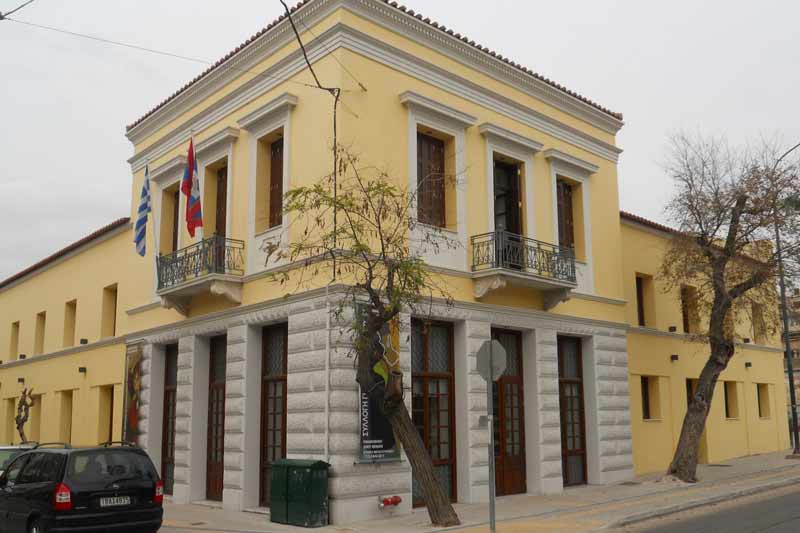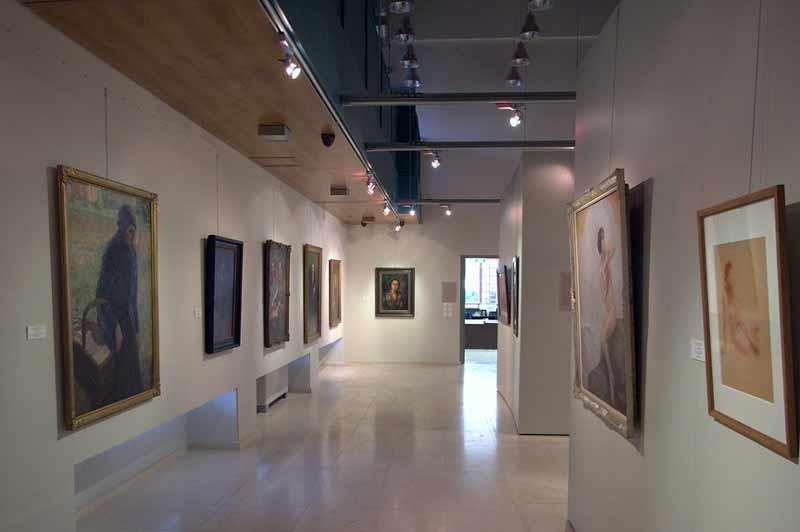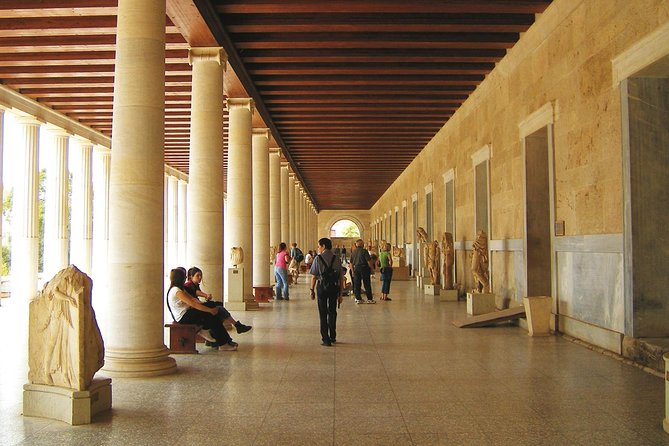
Museum of the Ancient Agora of Athens
The Archaeological Museum of the Ancient Agora of Athens is housed in the Stoa of Atalos, and its exhibits are connected with the Athenian Democracy. The monument is dated back to ca. 150 BC and it was resored between 1953 to 1956 to house the finds of the excavations of Ancient Agora.
The collection of the museum includes clay, bronze and glass objects, sculptures, coins and inscriptions from the 7th to the 5th century BC, as well as pottery of the Byzantine period and the Turkish occupation. Inscriptions pro democracy and against tyranny and glory statues crown the relief of the museum and among the objects associated with Athenian civic life and dating from the 5th to the 2nd centuries are a 5th century clepsydra used to measure the time like in the law courts, 5th century ostraca (inscribed potsheards used in voting to ostracize (expel) famous politicians such as Themistocles and Aristeides and the 4th century bronze ballots also used in the courts of law.
The Ancient Agora Museum also houses finds that reveal the commercial life of the city such as coins from the 6th century BC, official weights, amphorae and exclusive pottery. Important exhibits in the Ancient Agora include various ceramic containers, an aryballos (a small flask with the narrow neck) in the form of a kneeling athlete who binds the ribbon of victory around his head, a red figured kylix and a black-figure krater by Exekias showing a Hermes scene, a bronze Nike head a Nereid statue and some even more outstanding statues like the statue of Apollo Patroos, a collosal statue of Euphranor as well as well as the monumental female figures of either Themis or Democracy.
Acropolis Museum
The Acropolis Museum opened its doors in 2009 and hosts the most completed exhibition of findings and preserved treasures of the Acropolis of Athens. The original museum was on the Acropolis; it was completed in 1874 and underwent a moderate expansion in the 1950s. However, successive excavations on the Acropolis uncovered many new artifacts which significantly exceeded its original capacity.
The museum is located by the southeastern slope of the Acropolis hill, on the ancient road that led up to the “sacred rock” in classical times. Set only 280 meters, away from the Parthenon, and a mere 400 meters walking distance from it, the museum is the largest modern building erected so close to the ancient site. The entrance to the building is on 15 Dionysiou Areopagitou street, Makriyianni area and directly adjacent to the Acropolis Station, line 2 of the Athens Metro.
The 5 exquisite collections hosted at the Museum contain findings from the slopes of the Acropolis, works of the Archaic Era, the Classical Acropolis, the post-Parthenon and the Roman Period. The collections of the museum are exhibited on three levels while a fourth middle level houses the auxiliary spaces such as the museum shop, the café and the offices. On the first level of the museum there are the findings of the slopes of the Acropolis.
The long and rectangular hall whose floor is sloping, resembles the ascension to the rock. Then, the visitor is found at the large trapezoidal hall which accommodates the archaic findings. On the same floor there are also the artifacts and sculptures from the other Acropolis buildings such as the Erechtheum, the Temple of Athena Nike and the Propylaea and findings from Roman and early Christian Athens. However the visitor is intended to see the latter during descent so as to keep the chronological order because he will first be directed to the last level of the Parthenon marbles.
The Parthenon hall has the same orientation with the temple on the Acropolis and the use of glass allows the natural light to enter. In the centre of the Parthenon Gallery on the 3rd floor, visitors may observe a video presentation about the Parthenon and the sculptural decoration of the monument.
Acropolis Museum: www.theacropolismuseum.gr
Benaki Museum
The Benaki Museum, established and endowed in 1930 by Antonis Benakis in memory of his father Emmanuel Benakis, is housed in the Benakis family mansion in downtown Athens Greece.
The museum houses Greek works of art from the prehistorical to the modern times, an extensive collection of Asian art, hosts periodic exhibitions and maintains a state-of-the-art restoration and conservation workshop. Although the museum initially housed a collection that included Islamic art, Chinese porcelain and exhibits on toys, its 2000 re-opening led to the creation of satellite museums that focused on specific collections, allowing the main museum to focus on Greek culture over the span of the country’s history. The central building of Benaki Museum is located at 15 Vassilis Sofias avenue, Kolonaki, near Syntagma Square.
With its extensive collections, the Benaki Museum of Islamic Art presents to the public the treasures of Greek Art, covering every aspect of art world from antiquity to 1922. As part of the museum’s re-focusing on Greek culture, its Islamic collection was moved to a new home in 2004, located at 22 Agion Asomaton street, Thisio.The new museum also has new galleries for temporary traveling exhibits. Inaugurated on 27 July 2004, the museum occupies more than 1,000 square meters of remodeled space showcasing: ceramics, pottery, metalwork, gold, woodcarvings, glasswork and textiles, bone carvings, inscribed funerary steles, arms and armor. The museum’s collection is said to rank among the most important worldwide and includes masterpieces from India, Persia, Mesopotamia, the Middle East, Arabia, Egypt, Sicily, North Africa, Spainand Asia Minor. Covering Islamic art from the 7th through the 19th centuries, it has a rich collection of Otoman Artfrom the Empire’s peak in the 16th century Permanent and also periodical exhibitions shares with the world the creators of Greek Art but also exihibtions of Coptic, Chinese and Islamic Artwork.
Benaki Museum extends its collections to more buildings in several parts of Athens…Pireos st. Annexe, Delta House, Kouloura House, Nikos Hadjikyriakos-Ghika Gallery, Yannis Pappas Studio and Mentis Donation.
Benaki Museum: www.benaki.gr
Herakleidon Visual Arts Museum
Herakleidon Visual Arts Museum was opened by the inspiration of neoclassical art and to exihibit the artist works of those who have influenced the evolution of the art world. A private museum space in the heart of Athens, under the shadow of the Acropolis, located at 16 Herakleidon street, Thisio.
The exhibition program consists of artists who play or have played an important role in the evolution of Art. The museum introduces to their visitors an optic view of the artist through the elements of personal growth, vision and techniques.
The museum’s mission is to introduce visitors to the art of the exhibited artist, to show how the artist has evolved through the various important periods in his or her career, to explain the various techniques used by the artist to express his or her vision, and to help the visitors connect to both the artist’s life and work. To accomplish this, not only will works of the artist be on exhibit, but also preparatory sketches, drawings, photographs and personal items. Audiovisual and other aids provide complete and detailed information on the life of the artist, each phase of his or her work, and his or her techniques.
Although badly damaged by the many earthquakes it has withstood, this neoclassic building was completely restored, renovated and designed according to the highest standards. The facade of the historic building was renovated in the 1990’s following a government decree. In keeping with its function as a museum, the most up-to-date security, protection and display systems have been installed. Lighting with optical fibers, temperature and humidity controls, and proper visitor circulation meet the most exacting museum specifications.
Herakleidon Visual Arts Museum: www.herakleidon-art.gr
Athens Technopolis Gazi – Industrial Museum
The old gas factory of Athens, known as “Gazi”, next to Kerameikos, now hosts the Technopolis of Athens City, a live industrial museum of incomparable architecture that keeps the charm of another era. (Technopolis means the city of arts)…
Athens Technopolis Gazi hosts exhibitions, conventions and conserts and is located at 100 Pireos street, Gazi. During summer time, while Gazi area becomes the hottest spot of Athens nightlife, Technopolis Gazi becomes a great venue of alternative creation and act.
Since January 2013 Technopolis houses the first Industrial and Technological Museum in town. The Industrial Museum of Athens through its authentic artifacts, machinery, vast photographic material, sound documentaries and video projections which highlight the industrial legacy and archeology, the entrepreneur spirit of each age, the factory working conditions and the new and old energy sources, the visitors have the opportunity tο discover one – until now “forgotten” – part of Athens’ history. Taking a tour with targeted stops, the visitors get the chance of being guided throughout the factory fascilities and also they can follow the gas production line.
Located next to the Metro Station of Kerameikos, the City of Athens Technopolis was dedicated to the memory of the great Greek composer Manos Hadjidakis.
Athens Technopolis – Gazi: https://www.athens-technopolis.gr/
Hellenic Cosmos
Goulandris Museum of Cycladic Art
Goulandris Foundation created the Museum of Cycladic Art in Athens, to dedicate itself to the study and campaign of Ancient Greek Artwork. is one of the great museums of Athens. It houses a magnificent collection of artifacts of Cycladic Art.
The museum was founded in 1986 in order to house the collection of Cycladic and Ancient Greek art belonging to Nicholas and Dolly Goulandris. Starting in the early 1960s, the couple collected Greek antiquities, with special interest in the prehistoric art from the Cyclades Island of the Aegean Sea. The Museum’s main building, erected in the centre of Athens in 1985, was designed by the Greek architect Ioannis Vikelas. In 1991, the Museum acquired a new wing, the magnificent neo-classical Stathatos Mansionat the corner of Vassilissis Sofias Avenue and Herodotou Street.
Cyclades are a complex of islands, south of Athens where art has evolved with significant differences from the mainland’s art. The museum is the resident of a truly interesting and remarkable collection of Cycladic Art, Ancient Greek Art as well as Ancient Cypriot Art.
The best-known art of this period are the marble figures usually called “idols” or “figurines”, though neither name is exactly accurate: the former term suggests a religious function which is by no means agreed on by experts, and the latter doesn’t properly apply to the largest figures, which are nearly life size. These marble figures are seen scattered around the Aegean, suggesting that these figures were popular amongst the people of Creteand Mainland Greece (Doumas 81). Perhaps the most famous of these figures are musicians: one a harp-player the other a pipe-player (Higgins 61). Dating to approximately 2500 BCE, these musicians are sometimes considered “the earliest extant musicians from the Aegean” (Higgins 60).
The museum of Cycladic Art is located at 27 Vasilisis Sofias avenue, Kolonaki.
Goulandris Cycladic Art Museum: www.cycladic.gr
Municipal Art Gallery of Athens
Municipal Art Gallery is housed in a neoclassical building on Koumoundourou Square, built in 1874 based on a design by architect Panagis Kalkos. The Gallery opened at this location on September 22, 1982, following its move from the Cultural Centre on Akadimias Street, where it was situated since 1974. The gallery will host periodic exhibitions as well as permanent collections. Initially though, it will present a permanent collection, after its first major exhibition, the gallery will then hold both permanent and temporary exhibitions concurrently.
The collection was set up in 1923 by their respective mayors and enlightened managers of the Municipal Gallery, as reported by Ms. Kyriazis, referring first to Papapanagiotou Stavros the first director then to Spyros Papaloukas, who held this position from the 1940s until his death in 1957.
The municipality’s rich collection includes more than 2300 works from leading 19th- and 20th-century Greek artists, including works from the acclaimed ‘30s generation, as well as a fine collection of engravings.
The big names of the collection include George Iacovidis, Angelos Giallina, Vincent Bokatsiampi, Nikos Litras, George Bouzianis, Agenor Asteriadis, Yanis Moralis and other “precursors” of the generation such as Gerasimos Steris. Contemporary artists include Opi Zouni- recently deceased, Chronis Botsoglou and Maki Theofylaktopoulos.
The Municipal Art Gallery of Athens is located at Myllerou 32 & Leonidou street, Metaxouryio.
Municipal Art Gallery of Athens: www.breathtakingathens.com/node/5001377
Archaeological Museum of Kerameikos
The Archaeological Museum of Kerameikos was built in 1937 on the plans of H. Johannes, with a donation of Gustav Oberlaender. It was enlarged in the 1960’s with the support of the Boehringer brothers.
Τhe exhibits are displayed in chronological order, but also according to their subjects and their provenance. The whole establishment displays a large collection of really rare and beautiful pottery, some sculptures and and a collection of pillars and grave markers. he primary findings, objects directly related to the cemetery offer a profound isight into the burial customs of ancient Athens. Artifacts include funerary urns and monuments and grave offerings.
Some of the most important items of the museum are:
- Cinenary Amphorae of the Early Geometric period. Dated to 860-840 B.C.
- Black-figure lekythos. The body is decorated with a representation of Dionysos accompanied by two satyrs. It is attributed to the Amasis painter, and dates to 550 B.C.
- Marble Sphynx. It crowned an archaic funerary stele, dated to 550-540 B.C. Grave stele of Ampharete. Marble relief depicting Ampharete with her grandchild.
- Dated to 30-420 B.C. Red figured hydria, decorated with a multi-figured composition, painted by Meidias. Dated to 430 B.C. Grave stele of Dexileos. Marble stele dated to 394/393 B.C.
The Archaeological Museum of Keramikos is located in 148 Ermou street, Thisio.
Archaeological Museum of Keramikos: http://odysseus.culture.gr/






